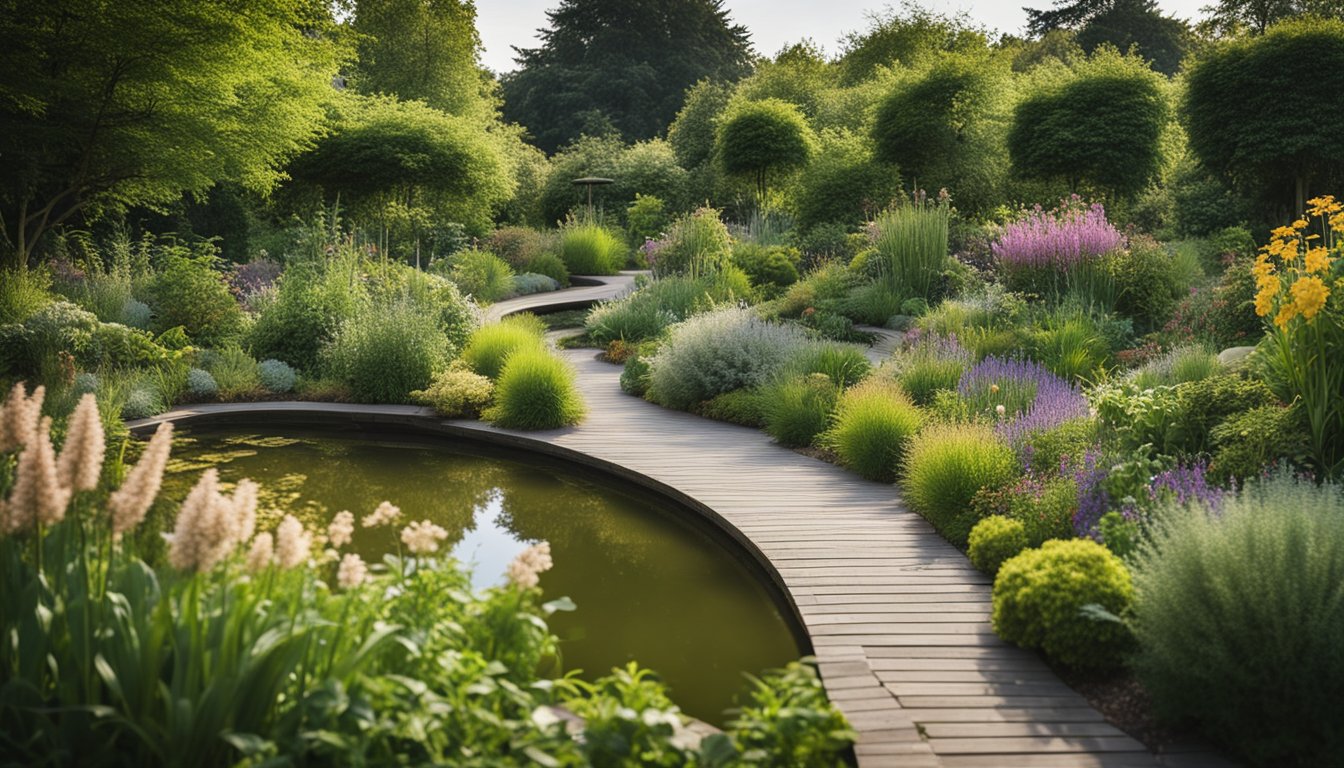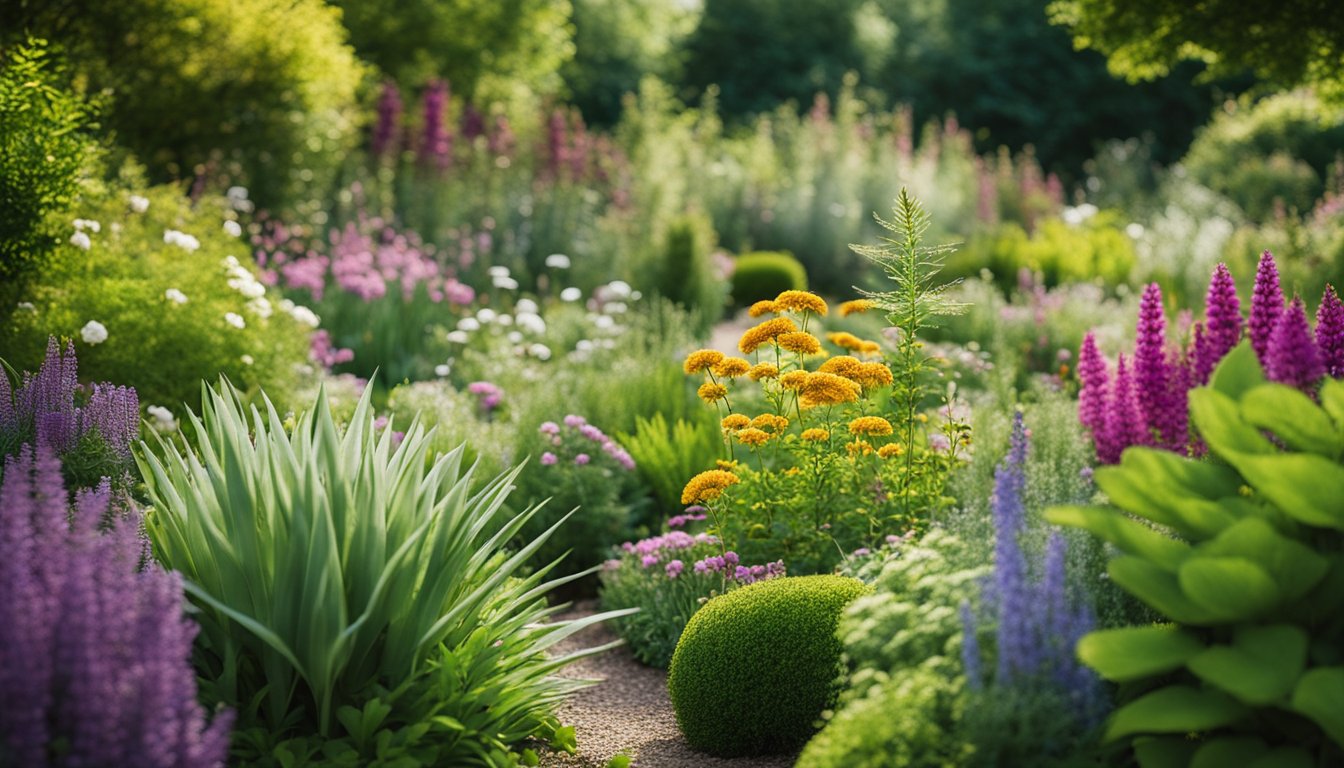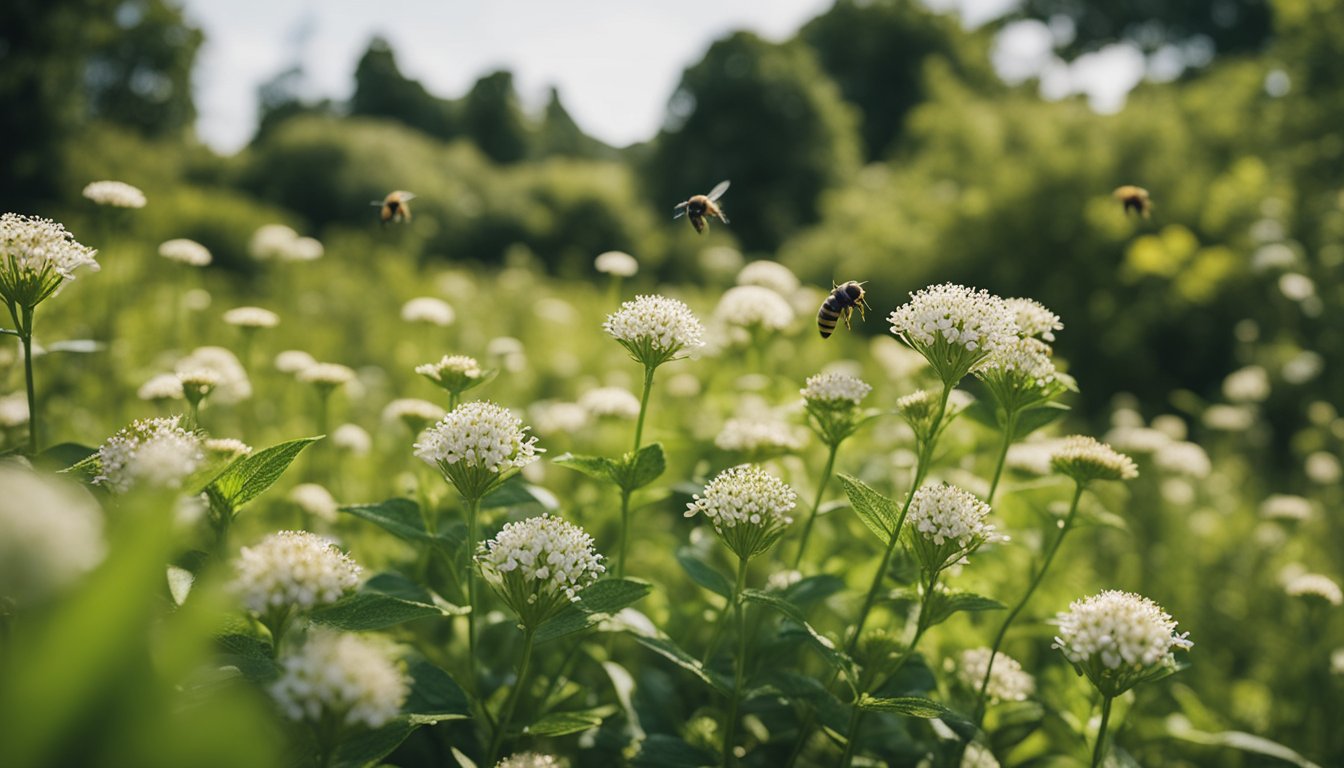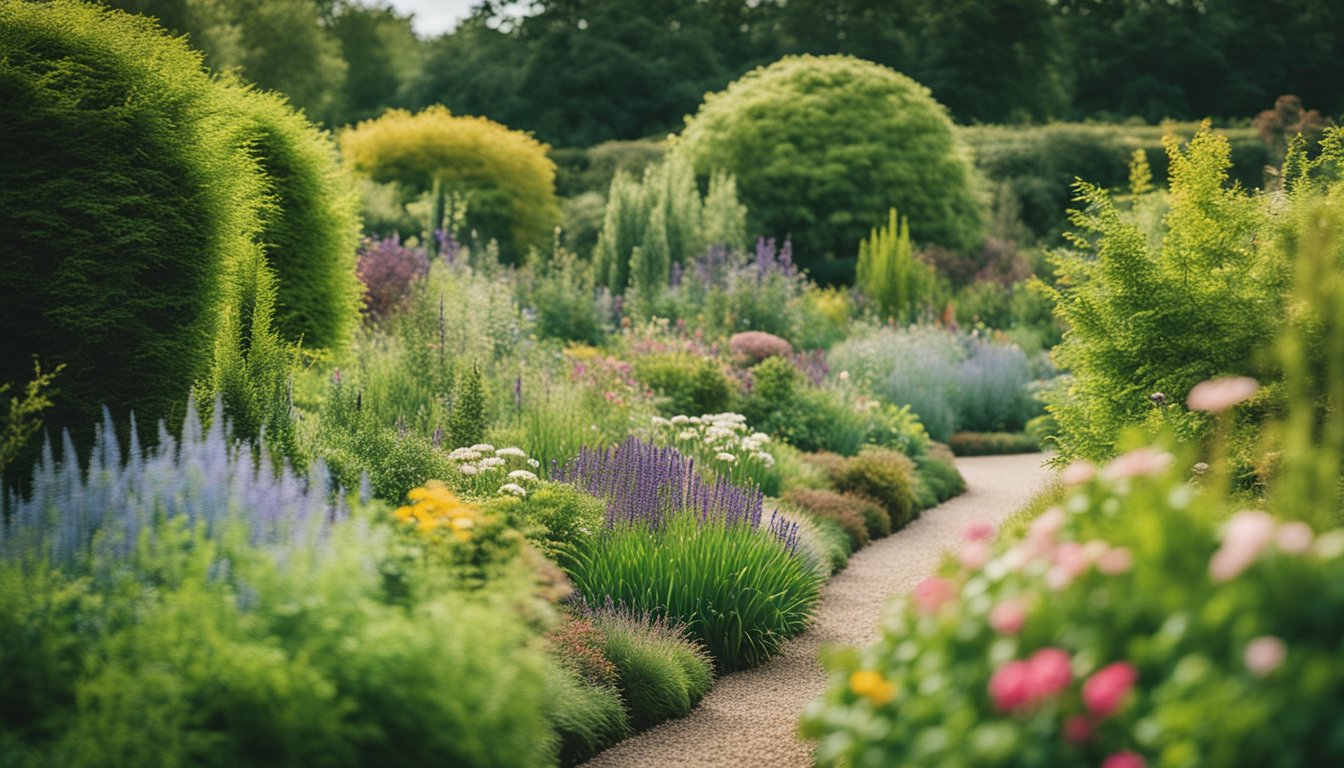Late updated: 28 Dec 2024 09:12
Written by: Emily Thornton
Innovative UK Landscaping With Native Plants: Enhancing Sustainable Gardens
Embarking on the journey of innovative UK landscaping with native plants invites us to rethink our outdoor spaces with a fresh perspective. Native plants not only add a touch of authenticity to our gardens, but they also support local wildlife and contribute to the conservation of the ecosystem. The strategic use of native plants in garden design can significantly boost biodiversity and sustainability.

As we design with native flora, we tap into a deeper understanding of our environment’s needs. These plants are uniquely adapted to local conditions, making them resilient and low-maintenance, which enhances their appeal for sustainable landscaping. This approach promotes a more harmonious relationship between our gardens and the natural landscape.
Our role is not just to create beautiful gardens, but to foster biodiversity and contribute positively to environmental conservation. With native plants, we have the opportunity to create spaces that are both visually appealing and ecologically responsible. This blog post will guide you through practical tips and innovative ideas to transform your garden into a sustainable oasis.
Key Takeaways
- Native plants enhance garden biodiversity and sustainability.
- Designing with native flora supports environmental conservation.
- Low-maintenance native plants promote resilient landscapes.
Designing with Native Plants

By using native plants, we can transform gardens into vibrant ecosystems that support local wildlife and create year-round interest. Focusing on species selection, aesthetics, and wildlife-friendly features enhances both beauty and biodiversity.
Selecting the Right Species
Choosing the right native species is key to a thriving garden. We should focus on plants well-suited to our local soil, climate, and habitats. Considerations include growth habits, light requirements, and moisture levels. Native wildflowers, grasses, and shrubs offer a diverse range of options. Species such as Primula vulgaris and Digitalis purpurea not only enhance aesthetics but also provide essential nectar sources for pollinators like bees and butterflies. It is essential to research and select plants that will thrive and contribute to a sustainable ecosystem.
Garden Aesthetics and Seasonal Interest
Achieving garden aesthetics and providing year-round interest requires careful planning. We can emphasize texture, colour, and form by incorporating plants that offer varying visual appeal throughout the seasons. Spring blooms, summer foliage, autumn berries, and winter structure all play crucial roles. By integrating native plants with different bloom times, such as Ajuga reptans for spring and Sedum spectabile for autumn, we can maintain dynamic interest. Combining evergreen shrubs with deciduous species ensures our garden remains attractive even in the colder months.
Wildlife-Friendly Features
Our gardens should serve as sanctuaries for local wildlife. Incorporating wildlife-friendly features helps in sustaining diverse habitats. We achieve this by planting nectar-rich flowers and providing berries for birds. Areas of dense vegetation offer shelter, while logs and stones can create homes for insects and small creatures. Strategic placement of water features, like birdbaths or small ponds, invites birds and amphibians. Including native trees and bushes ensures a layered habitat, beneficial to various species.
By prioritising these design elements, we create a thriving, vibrant, and ecologically resilient space.
Sustainable Practices and Benefits

Incorporating sustainable practices into our landscaping efforts brings numerous benefits. By focusing on soil health, water conservation, and supporting local ecosystems, we can create beautiful and ecological gardens. The following explores these key elements in detail.
Soil Management and Health
Our approach to soil management involves understanding the various soil types common to the UK. We focus on enhancing soil health through techniques like composting and mulching. These practices help in retaining soil moisture and improving nutrient availability.
Using organic compost not only enriches the soil but also reduces the need for chemical fertilizers. Mulching with organic materials controls soil temperature, maintains moisture, and suppresses weed growth, benefiting the overall sustainability of our landscapes.
Water Conservation Techniques
Water conservation is critical in sustainable landscaping. We utilise a range of water-saving techniques, including rainwater harvesting. By collecting rainwater, we decrease dependency on mains water and ensure a consistent supply for plants, particularly during dry spells.
Incorporating water-efficient irrigation systems and using drought-tolerant native plants further reduces water usage. This approach not only conserves resources but also supports plant health by maintaining adequate soil moisture levels without over-watering.
Supporting Local Ecosystems and Biodiversity
Planting native trees and shrubs plays a significant role in preserving and supporting local ecosystems. These plants are adapted to the local climate, requiring less maintenance and providing habitat for native wildlife, including beneficial insects and pollinators.
Creating wildlife-friendly features in our gardens encourages biodiversity. Features like birdhouses and butterfly gardens attract various species, enhancing the natural balance. Sustainable landscaping practices protect our gardens from pests and diseases, reducing the necessity for harmful chemicals and lowering the environmental impact.
Frequently Asked Questions

Native plants offer significant benefits for UK landscaping, from supporting biodiversity to reducing maintenance needs. In this section, we address common queries to guide your landscaping choices effectively.
What are the best native plants to use for a low-maintenance UK garden?
Our roster of native plants ideal for low-maintenance gardens includes foxglove, primrose, and field scabious. These hardy plants thrive with minimal attention, offering both beauty and ecological value.
How can edible plants native to England be incorporated into landscape design?
Integrating plants like wild garlic, elderberries, and nettles adds both utility and aesthetic appeal. They not only enhance culinary options but also support local pollinators, merging practicality with ecological benefits.
Which native British plants are most beneficial for local wildlife?
Plants like hawthorn and holly are excellent choices. They provide food and habitat for various birds and insects, encouraging a balanced ecosystem within the garden environment.
What considerations should be taken into account when choosing small trees for privacy in UK gardens?
When selecting small trees, we should focus on species like rowan and silver birch. These trees offer natural screening without overwhelming the space and adapt well to varied British climates.
Can you recommend a list of native British flowers that thrive in urban environments?
Urban-friendly flowers like bird’s-foot trefoil and wild marjoram perform well. They withstand the challenges of city conditions and contribute to urban biodiversity, flourishing in available green spaces.
What plants native to Scotland are suitable for landscaping in harsher northern climates?
In Scotland’s harsher climates, plants such as Scots pine and heather are commendable. They are resilient and add structural beauty while withstanding cooler temperatures and varying weather patterns.
